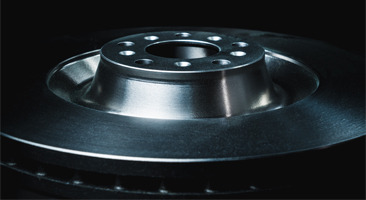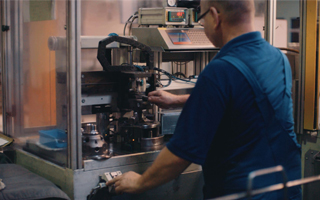What is A Camshaft and How Does it Work?
30th January 2019

Camshafts are another of the many critical components required to enable a combustion engine to work, but what exactly is a camshaft and why is its role so important?
Old Tech
We’ll assume you’re familiar with the basic function of a combustion engine – fuel and air are ignited inside a cylinder, producing explosive energy that’s converted into motion via the pistons, crankshaft and transmission.
It sounds simple enough, but as we know the internal combustion has gone through more refinement and development than just about any other mechanism on the planet, so that is now an extremely complex system of parts.
The camshaft however, is one of the older parts and has been dutifully working since the early days of engine invention and progression. This is because the cam itself is an incredibly ancient idea that stretches right back to 13th century Turkey - where it was used in a variety of mechanisms by the legendary Ismail al-Jazari and described in his ‘Book of Knowledge of Ingenious Mechanical Devices’.
Fast forward to the 21st century and its principles of operation are the same now as they were then.
Synchronicity and Shape
A camshaft is a relatively basic component – a simple length of rod, or shaft, with shaped lobes positioned along it, these have been christened 'cam lobes'. When the shaft is rotated, the shape of the cam allows it to act upon a valve or switch to a degree matching the severity of its shape - with the speed of rotation controlling the rate of action.
In a modern internal combustion engine they are typically, but not necessarily, positioned directly above the cylinder banks where they act to control the valves. Their calibration precisely controls the amount of air-fuel mixture that enters the chamber, and how efficiently the spent exhaust gases from the previous ignition can exit the chamber making way for the next charge.
This makes them not only critical to the operation of an engine, but because the opening and closing of the valves must be carefully and perfectly synchronised with the movements of pistons, they also have a drastic effect on performance.
To ensure this timing, the camshafts are connected via a timing belt or chain to the turning of the crankshaft - which is directly moving the pistons inside the cylinder. Moreover, the shape of the cams themselves is also carefully crafted to control the speed at which the valves open and close. This is better known as variable valve timing.

The basic action of a cam.
Advantages in Numbers
There can be a varying number of camshafts in an engine, depending on its cylinder arrangement and valve operation. Because you need at least one camshaft per cylinder bank, inline engines need as few as a single camshaft, whereas a V arrangement would require at least two. Some engines use double overhead camshafts (DOHC), so would have as many as four across two banks of cylinders.
The use of an additional shaft per bank provides numerous advantages over a single overhead camshaft design (SOHC) despite the additional weight and cost. Ideal component placement for better efficiency, increased top end power, and a less complex valve operation when using more than two valves per cylinder
Four valves per cylinder is a common configuration for its efficiency, as it makes use of the maximum amount of cylinder head space. Whilst a SOHC can manage to operate four valves per cylinder too, it requires a complex system of rods and cams to achieve it, and so DOHC is preferred instead.

The complete system in operation.
Change on the Horizon
Significantly DOHC allow for the use of more sophisticated valve technology which works to alter the timing, duration and lift of the valves. This control can improve fuel efficiency, increase power and reduce emissions when needed, depending on the situation.
It’s been a major innovation in engine design in recent years, and just about every car manufacturer has their own version of it, working on many different elements of engine timing system.
Some use multiple cam profiles and switch between them depending on engine load; others alter the timing between the crankshaft and the camshafts to alter performance. One of the first systems used oil pressure to alter valve operation.
The best system is yet to be decided on, but you can be sure that more of these systems will be finding their way onto engines as the never-ending quest for efficiency and power continues - and the humble camshaft becomes another part to see its design and role reimagined.







